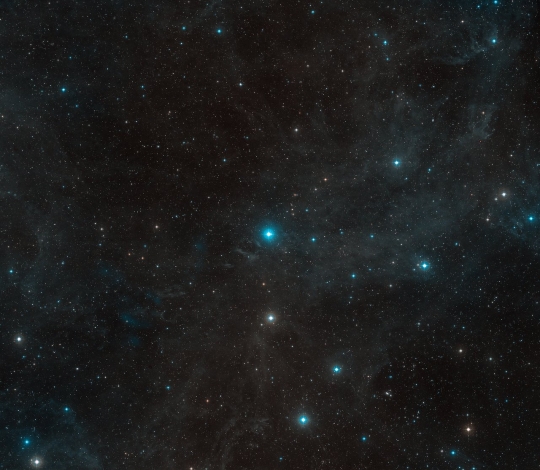HR 8799e: A New Level of Exoplanet Imaging
by PAUL GILSTER on APRIL 4, 2019
A method for enhanced exoplanet investigation takes center stage today as we look at the GRAVITY instrument, a near-infrared tool aided by adaptive optics that brings new precision to exoplanet imaging. In operation at the European Southern Observatory’s Very Large Telescope Interferometer (VLTI) at Paranal Observatory in Chile, GRAVITY works with the combined light of multiple telescopes to produce what would otherwise take a single telescope with a mirror diameter of 100 meters to equal. The early demonstrator target is exoplanet HR 8799e.
The method at work is interferometry, and here we are applying it to a ‘super Jupiter,’ more massive and much younger (at 30 million years) than any planet in our Solar System. The GRAVITY observations of this target mark the first time that optical interferometry has been used to study an exoplanet at this level of precision, producing a highly detailed spectrum. The planet is part of a 5-planet system some 130 light years away, all 5 of the planets being gas giants between 5 and 10 times the mass of Jupiter.

Image: This wide-field image shows the surroundings of the young star HR
8799 in the constellation of Pegasus. This picture was created from material
forming part of the Digitized Sky Survey 2. Credit: ESO/Digitized Sky
Survey 2. Acknowledgement: Davide de Martin.
The high resolution images that resulted from this work show what we can expect from optical interferometry going forward. We now know the distance between HR8799e and its star with 10 times the accuracy of previous estimates, which in turn helps to refine the planet’s orbit, one that appears to be slightly inclined compared to the orbital plane of its four companions.
That high-grade spectrum has spoken volumes about the composition of the planet’s atmosphere, says team leader Sylvestre Lacour (Observatoire de Paris and the Max Planck Institute for Extraterrestrial Physics):
More:
https://www.centauri-dreams.org/2019/04/04/hr-8799e-a-new-level-of-exoplanet-imaging/?utm_source=feedburner&utm_medium=feed&utm_campaign=Feed%3A+centauri-dreams%2Feepu+%28Centauri+Dreams%29
Science:
https://www.democraticunderground.com/122863354
